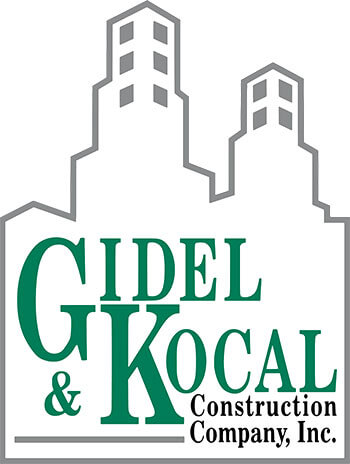
In the Bay Area, construction costs can be high and permitting slow, and every delay hits harder. Yet even on multimillion-dollar builds, the phase that causes the most problems is still the one that gets the least attention: preconstruction. This is where proper preconstruction planning becomes important.
It’s where assumptions go unchecked, budgets fall apart, and schedules quietly slip long before anything physical is built. And it’s also where experienced teams can prevent most of that from happening.
Preconstruction planning isn’t just paperwork. This is where critical decisions are made. What you’re building, how much it will really cost, what could go wrong, and how the team will pull it off. Ignore it or rush through it, and you’ll pay for it later, in redesigns, RFIs, change orders, or worse.
Taking a proactive approach during pr-construction planning helps prevent costly mistakes and delays.
In this article, we’ll show how preconstruction has changed in the Bay Area. We’ll look into what today’s planning process actually involves. We’ll analyze why the smartest contractors treat preconstruction as the real starting line, not a formality, before demo day.
How Preconstruction Planning Has Evolved in the Bay Area Market
Over the past two decades, the Bay Area’s construction process has undergone significant changes. Fueled by rising land costs, stricter environmental building codes, and increasing demand for mixed-use and sustainable facilities, the region has pushed contractors, architects, developers, and construction teams to be more agile and collaborative during the preconstruction planning process.
Historically, preconstruction was treated as a loosely defined phase, handled quietly behind the scenes by a project manager or estimator. Today, it’s a multidisciplinary effort involving the entire team: architects, engineers, designers, construction managers, compliance officers, and stakeholders.
Together, this preconstruction team works to align the team around the project’s goals, define the project scope, ensure resource allocation, develop a realistic construction schedule, and mitigate risks before they escalate into costly errors during the construction phase.
As regulations, materials availability, and labor markets continue to fluctuate, the preconstruction process has become more data-driven, tech-enabled, and strategy-focused than ever before.
Key Components of Effective Preconstruction Planning
So, what does successful preconstruction planning look like today? Proper planning is essential for successful preconstruction outcomes, as it helps identify potential weaknesses, streamline processes, and keep projects on track. Let’s break down the core elements that define a robust and resilient planning strategy.
1. Design Development
Feasibility studies are often conducted before design development to assess project viability, including site assessment, land acquisition, and financing, and to inform design decisions by evaluating financial, technical, and market factors.
The design development phase sets the tone for the whole project. During this phase, the design team collaborates with stakeholders to refine the architectural concept into detailed drawings that align with regulatory codes, functionality, and budget parameters. This phase culminates in the final design, which serves as the comprehensive blueprint guiding subsequent steps in the project.
Early involvement from a construction partner ensures feasibility is baked into the design. At this stage, having your construction manager review layouts can prevent future buildability issues and streamline code compliance.
2. Early Budgeting and Cost Estimation
An accurate project budget is more than just a number, it’s a dynamic tool for controlling costs and making informed decisions. Cost estimating during preconstruction should cover building materials, labor, site preparation, logistics, and permitting process fees.
In the Bay Area, where material and labor costs can shift quickly, cost implications must be modeled using real-time data. A good preconstruction planner will use iterative budgeting and contingency planning to prepare for inflation, supply chain disruptions, and scope changes. Detailed budgeting and planning at this stage are essential to help prevent cost overruns during the construction process.
3. Schedule Creation and Critical Path Analysis
Every successful build relies on a well-defined project timeline. During preconstruction, planners identify the critical path and the sequence of tasks that determine the shortest time to complete the project. Breaking the project into manageable tasks is essential for effective scheduling and timeline management.
A detailed construction schedule ensures coordination between trades, avoids overlaps, and allows for weather, review times, and inspection delays. Every team member knows what’s due and miscommunication and delays are minimized.
4. Risk Assessment and Mitigation
Mitigation risk analysis is where experience and foresight make the most significant impact. The preconstruction meeting often reveals concerns ranging from zoning conflicts to soil stability issues, labor shortages, or long lead times for specialized project materials.
From site assessment to project data analysis, a strong preconstruction planning team develops response plans, verifies assumptions, and adds redundancy to ensure resilience under pressure. Preconstruction management plays a crucial role in overseeing risk assessment and coordinating all activities before construction, ensuring project resilience and reducing the likelihood of costly errors.
5. Value Engineering Opportunities
In the Bay Area, value engineering is a must, not to cut quality, but to enhance performance while reducing unnecessary costs. This strategic phase identifies alternatives in materials, systems, and methodologies that maintain or improve functionality.
By working with an experienced general contractor, teams can achieve cost savings through prefabrication, energy-efficient systems, and optimized logistics, all without compromising the project’s goals or user experience. Effective value engineering is key to the project’s success.
Case Study: How Gidel & Kocal’s Preconstruction Services Saved Time and Money on a San Jose Project
At Gidel & Kocal, preconstruction isn’t just where we start; it’s where we shape the outcome. Project managers play a crucial role in coordinating, refining, and overseeing key aspects of the preconstruction phase to ensure project success. Our work on 180 Rose Orchard Way in San Jose is a strong example of what that looks like in practice.
The Challenge
The client needed to reposition a 41,312-square-foot, two-story office building for future tenants. The site included existing structures, such as a mezzanine and a two-story atrium, as well as aging systems, all of which presented challenges during the site assessment and planning.
These existing structures required careful consideration to ensure construction feasibility and minimize risks, as full replacement of outdated systems was necessary. The goal was clear: deliver a clean, modern, and market-ready interior on a tight timeline, without letting costs spiral or missing permit milestones.
Our Preconstruction Planning Approach
Our preconstruction team got to work quickly. We began with a full site assessment and coordinated directly with the client, program manager, and design partners to clarify the project scope and prioritize goals. From there, we took ownership of:
- Design development coordination: working closely with architects to ensure constructability, code compliance, and cost control
- Cost estimating: building a real-time budget based on current market conditions and material lead times
- Schedule development: creating a construction schedule that accounted for permitting, procurement, and sequencing of work
- Value engineering: recommending efficient systems and finishes that elevate tenant appeal while protecting the budget
- Permit planning: identifying review hurdles early and streamlining our permitting process to avoid last-minute delays
Throughout the process, we led weekly preconstruction meetings with the extended team, including the program manager, to facilitate project communication, provide visibility into key decisions, and ensure coordination across disciplines.
Effective project communication during these pre-construction meetings was essential for making timely decisions and keeping the project on track. Every task was tied back to the timeline, budget, and buildability because, in a fast-track renovation, there’s no room for guesswork.
The Outcome
Thanks to careful preconstruction planning, we transitioned seamlessly into the build. The space was fully demolished and rebuilt with new lighting, ceilings, mechanical systems, restrooms, and modern finishes, all delivered on time and within budget. Quality control measures were implemented throughout the project to ensure all specified requirements and standards were met.
Upon completion of construction, the client walked into a clean, high-quality core and shell space, ready for tenant improvements and immediate leasing activity. No last-minute change orders, reworks, or delays.
Technology’s Role in Modern Preconstruction Services
The digital transformation of the construction planning phase is well underway, and it’s changing everything. Technology is revolutionizing construction planning services by streamlining processes, improving accuracy, and enhancing collaboration across all stakeholders.
- Building Information Modeling (BIM): BIM enables the entire team to work from a unified, interactive 3D model. It improves project planning, reduces project errors, and allows clash detection before the construction site is active.
- Project Management Platforms: Cloud-based systems like Procore or Autodesk Construction Cloud centralize schedules, RFI workflows, project data, and bid tracking. These platforms enhance transparency, allowing every project manager, designer, or contractor to view updates in real-time.
- Augmented Reality and Laser Scanning: Tools such as AR headsets and 3D scanning streamline site planning, validate detailed drawings, and minimize layout errors. When the construction team can “walk” the design before it’s built, alignment and precision improve.
- Predictive Analytics: By analyzing trends in labor productivity, weather delays, or material costs, preconstruction planners can proactively adjust the detailed project plan and optimize resource allocation to better support the project’s objectives and outcomes.
- Permitting and Compliance Tools: Digital tools now help manage the permitting process by flagging potential regulatory issues early, tracking approvals, and auto-generating permit packages.
These technologies don’t replace human insight, but they enhance the preconstruction checklist, transforming informed guesses into data-driven decisions.
Conclusion: Why Choosing a Contractor With Robust Preconstruction Planning Capabilities Matters
Most problems that derail construction projects don’t show up on-site, they show up long before that, in overlooked details, vague assumptions, and incomplete plans. That’s why preconstruction planning isn’t a preliminary phase. It’s the work. It’s where coordination happens, risks are addressed, and the path forward becomes clear.
A contractor who knows how to lead a thorough preconstruction process doesn’t just help you get permits or create a budget. They help you build around reality, so you don’t waste time designing something you can’t afford, or scheduling crews before the site is ready.
At Gidel & Kocal, preconstruction planning isn’t a line item, it’s a discipline. From design development and budgeting to code compliance and schedule strategy, we guide projects through complexity and into construction with clarity and control.
If you’re planning a Bay Area project and want to move forward with fewer surprises, smarter decisions, and a partner who’s done this hundreds of times, we’re ready when you are.
